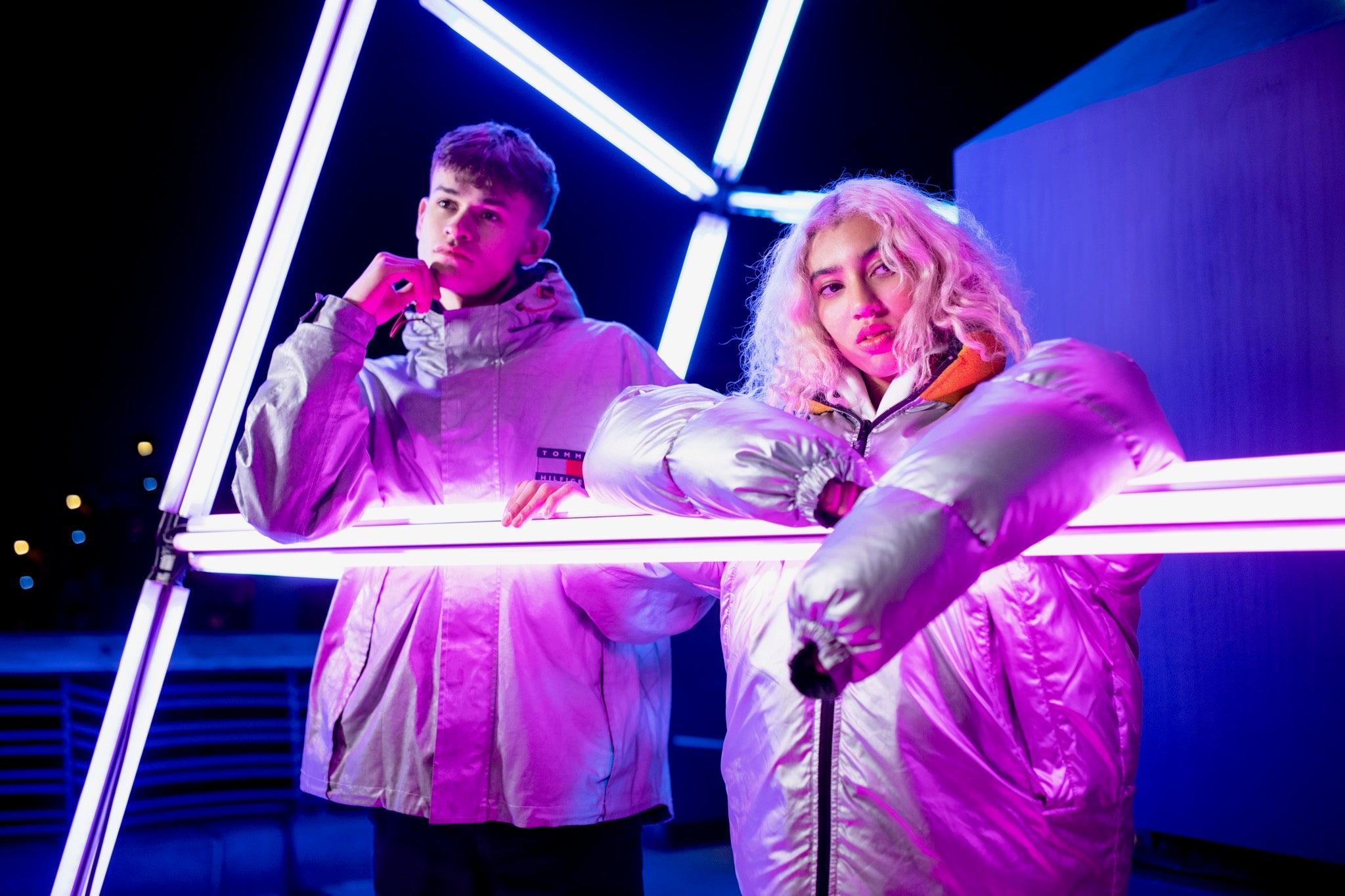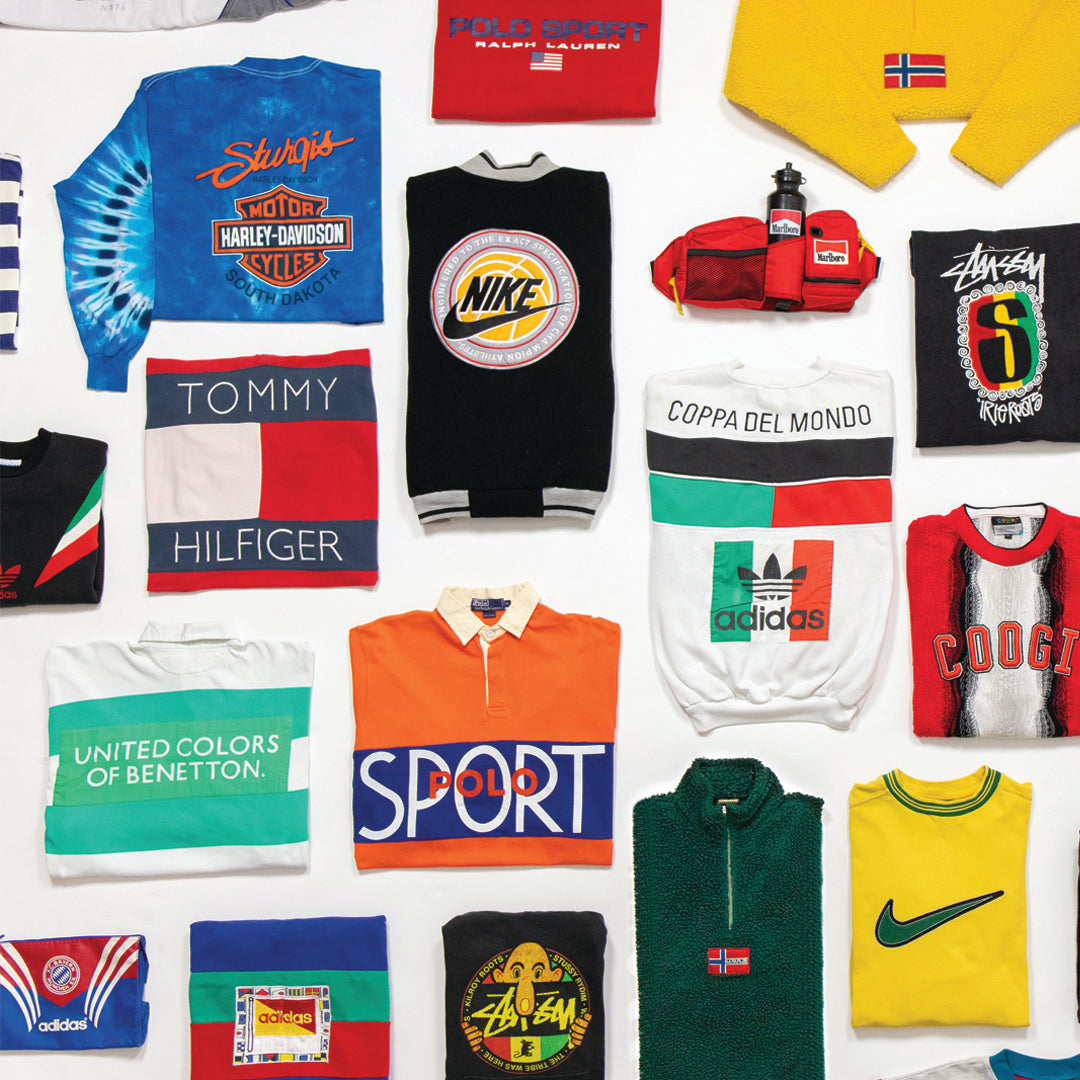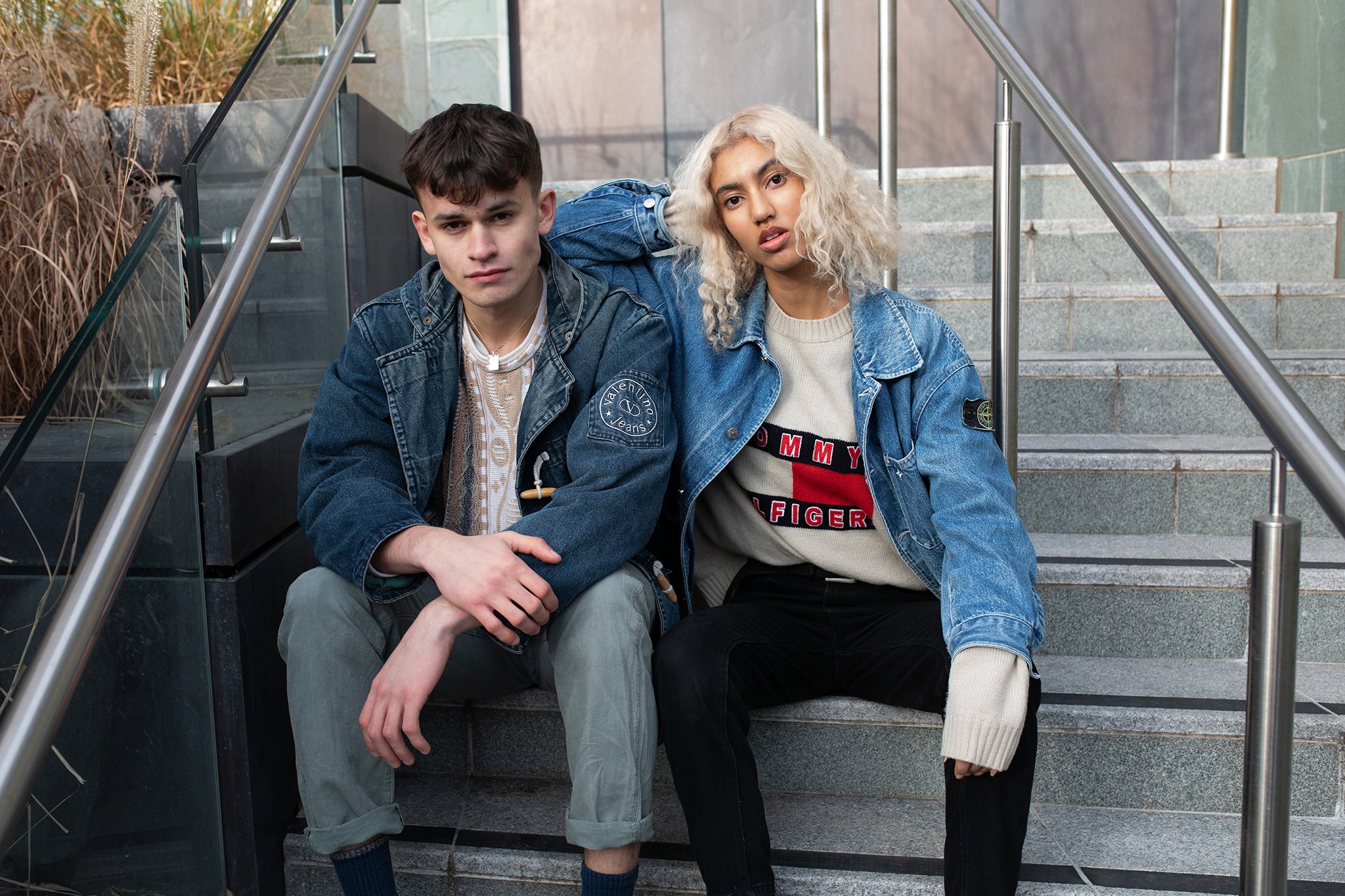Rory Westbrook was still in university when he turned his love for vintage clothing into a business by launching True Vintage. Initially selling on Instagram, Rory grew the business with an online store and later built a custom app. In this episode of Shopify Masters, Rory Westbrook of True Vintage shares how he sources vintage clothing, builds custom apps for other Shopify stores, and retains his customers.
Show Notes
- Store: TrueVintage
- Social Profiles: Facebook, Twitter, Instagram
- Recommendations: Shoppex, Loyalty Lion (Shopify app), Klaviyo (Shopify app)
The vintage shop born on Instagram
Felix: How did your interests in vintage fashion manifest into owning a vintage clothing company?
Rory: So it all started while I was studying at university six years ago, I was a collector of vintage clothing myself so I was always into fashion before that, but particularly the things I liked about vintage is you wouldn't see anyone else wearing the same thing. I loved the 90s era and the designs around that and the sustainability factor was something I liked that we were saving clothing from landfills and you could actually wear the clothing a few times and it would keep its value if not sell for more. So that was the original reason I got into vintage clothing in the first place.
Felix: Did you or the founding members have prior business experience?
Rory: So this was my first project, I was in the second year at university and I was studying business, and I formed the company myself. I'm a collector and I saw that there wasn't many vintage clothing companies around doing a good job online. So I set up the business mainly on Instagram, which is the first channel we started utilizing. I actually started out selling my personal collection to see if there was an appetite for these products. Within the first few days I sold out my whole collection, and that was simply just from putting the items on Instagram. I was following people using hashtags and word of mouth. We quickly gained a strong following. So within a few days of setting ourselves on Instagram, I then set up a website. We quickly grew from there.
Felix: What did your feed look like as you were building up the Instagram following?
Rory: To be honest, back then the feed didn't look amazing. This was six years ago. It was very simple what I was doing, just taking pictures of clothing on the floor or on a hanger, we've come a long way since then. I suppose the product did the talking. They're all exciting and loud designs, even though my imagery wasn't great back then, they certainly sold themselves and I was also running this out of my university bedroom so I didn't really have a great space to do it, I also started the business literally with a few hundred pounds savings. I didn't have great equipment or photography.

Felix: What about the captions on those photos or those images, how important were they?
Rory: To be honest, back then, I was posting on Instagram 20 to 30 times a day. That was before the days of the Instagram algorithm came into play. I was actually posting a lot and didn't actually have much time to get creative with the captions, but the use of hashtags and friends were tagging their friends in products they thought they would like, that seemed to work really well for us.
Idea validation and business launch
Felix: How many pieces did you sell before you realized that there was a validated business model?
Rory: It was about 15 pieces out of my collection. They sold so quickly that I knew there was definitely an appetite for this. With all of the money I got from selling those, I then quickly found suppliers and knew that I needed to set up a website, within a matter of days.
Felix: What was that next step after you validated the business?
Rory: So the next steps, I moved pretty quickly. I got a hold of some stock arriving within the next few days. So I had a few days to get the website up and running and get our domain sorted, and then from there, I was just focusing on getting as much stock as possible and as soon as it was coming, getting it online and selling it straight away. There wasn't much of a delay. The only thing I had to juggle was university at the same time. So I was studying full time as well as trying to work full time on the business.
Felix: Now when you don't have a lot of data in the early days, how did you make informed decisions on what to stock up on from the suppliers?
Rory: I was literally just going for what styles I liked at first. I got together a good buying guide for my suppliers for the things for them to stick to and at first, it was items that I liked, and then after a while as you mentioned then data that was more relevant and I could actually start to see what was doing well.
Felix: How much was that initial production run where you ordered pieces to stock up the website?
Rory: So, that was just a few hundred pounds. The first mini-stock drop to come and then from there I had very limited costs when I first set up the business and was running out of my bedroom so all the money I made I was reinvesting, it quickly grew from that.
Felix: How did you drive traffic to the website?
Rory: Yes, so literally the only way was from Instagram in those initial few months, and Twitter, I was running Facebook, but Instagram has always been the dominant channel for us. So I focused more on that area. So yeah, something I touched on early was the competitions that really helped get our name out there and word of mouth, and no money spent on marketing. Not even within the first few years of our business operating.
Felix: Can you talk more about this competition and how was it set up?
Rory: We run a number of different competitions, it would be for customers to win store credit or a special product that we had. It was just as simple as on Instagram, liking the picture and sharing it or tagging friends and that got us a huge reach. We also ran the competition in partnership on our Twitter page as well, just a simple favorite and retweet. I think we used to run those every couple of weeks and within the first few months, we were up to 30,000 followers on Instagram.
Felix: Is there an ideal perfect model for you when it comes to competitions and giveaways on social channels?
Rory: We're always open to trying new things, I would say the most recent one that we did with a company called Mob Kitchen, we paired up with them and we gave away 3000-pounds store credit, so by far the biggest competition we've ever done and that was simply people liking the picture and tagging their friends and we gained a lot of new fellows doing that.
Felix: How did you determine who to partner with?
Rory: You don't want to partner with any direct competitors. So we wanted someone in a different space. They've got a great following, a young customer base similar to ourselves and they focus on university students and create some amazing meals and ideas for cooking and recipe books, it was like a really good fit in terms of their customer base.
Felix: What worked to drive your Instagram followers to your store?
Rory: Back then on Instagram, we didn't have any of the fancy shopping bars on Instagram or anything like that. So if anyone saw products they liked, they had to go to the website anyway to get a better view of it. What also worked well for us was that all of our items are unique, one of one, so people knew they would sell out really quickly. So people were almost rushing to buy that garment before anyone else. When I was looking into how other companies approach Instagram, no one was doing it how we were posting that, did that amount of times and not regularly just that product focus but that really worked well for us, and as we've seen the changes recently in Instagram, I think the other companies have seen how important it is as a tool for selling.
Felix: Can you talk a little bit about how your Instagram advertising strategy has shifted these days?
Rory: Yes, I've chosen the strategy in terms of marketing to our followers already. We now have the use of Instagram stories, which is great to put lots of content in there and then within the actual product, within the actual Instagram feed, we are only posting up to four times a day and we make sure that content is different from you've seen before and made sure it's really exciting and we spend a lot more time creating something special for that. What we do now as well is Instagram advertising, which again works really well for us and thus obtaining new potential customers through adverts. We've been doing it for a few years now and help generate new followers and sales.

Felix: Do you have a dedicated member that works on producing the content that goes into the stories and the feed or what's the process for every day?
Rory: That's the job of my brother, Guy, who's been working with me pretty much since we started and he's got the task of content creation as well as other things. But, yeah, content creation is a daily task for us and something we have to stay on top of just as I mentioned before, all of our products are unique. So once we create the content for that, we can only sell one of those pieces. So it's a constant battle to keep our Instagram page exciting and try and drive as many of our followers to the website to find some of the products as possible.
Why building a custom shopping app was the right decision
Felix: Tell us more about the app that you guys developed and how it helps with marketing to existing customers.
Rory: Our app launched last year and it's been hugely successful for us, probably one of the best things we've ever done for the business. But in terms of actually marketing to our customers, and it's by far our best channels. For post notification, most of our customers just sign up to those straight away because we offer an app-only discount. As soon as you download the app, you'll be given a discount code and then from there, our customers then engage with us and will receive flash sales or product releases, which we'll put out first on the app. And it really helps us drive more traffic to the app and helps with sales and as well as the standard push notification, we've actually got automated campaigns. So if customers haven't been on the app in a while, we send them a gentle reminder that we've added new stock or if they are a VIP customer because they've spent a certain amount with us, we'll send them a push notification with the reward.
Felix: Tell us more about the contents of the app.
Rory: It's a shopping app, we also have the blog on there as well, and ultimately it's just an improved user experience for our customers. So we actually had 80% of our traffic coming from a mobile device on our website, and I think that's pretty typical for eCommerce companies out there at the moment. So about a year ago, we saw how much traffic was actually coming from a mobile device and that was probably down to our customer base is pretty young. Most of our customers are aged between 16 and 30, and, again, Instagram people were coming directly from a mobile device. So we wanted to look at improving that user experience, and we also did regular polls with our customers via Instagram and the app often came up as something our customers wanted to see. So on the back of that, we looked to launch the app as soon as possible and it's far exceeded our expectations in terms of revenue and now makes up a third of our total revenue, which is pretty astonishing considering we've only had it up and running for a year, and what I touched on earlier, how we're engaging with customers is far more effective. But, ultimately we're just providing a better user experience for customers and our loyal customers are downloading the app, and it's easier to check out.
Felix: What were you asking your customers and what were their answers that led you to build this app?
Rory: So we used to ask numerous things on our posts, like looking at products. Brands that they wanted to see and then we went into how they feel the experience could be improved with True Vintage as well and that's when the app seemed to come up a lot. They mentioned that the mobile experience was good on our website, but they definitely would want to see an improved experience.
Felix: How did you get the app built?
Rory: We were getting quotes for having an app custom-built and the quotes were coming back hugely expensive. We were shopping around and I was looking at the Shopify app store to see if there was any technology where we could build our own mobile app, and at the time I couldn't find anything. So that's why we wanted to look into what could be done about that. So we got the technology for ourselves and connected it directly to our Shopify store, which is great that all the products and collections and orders are synced in real-time, and then we had a dashboard to create our own app. So we linked up the collections, we designed the app, and then we also had a section where we could manage the push notifications from as well and an analytics section. We initially built the app for True Vintage and just on the back of the success, it's got off to a great start and already makes up a third of our total revenue, and we're engaging with customers far better than any other channel. I thought that there's an opportunity here for a new business to open this software up to other Shopify stores. So that's when we formed a new business called Shoppex, and we now sell that technology to other Shopify stores to set up mobile apps for them as well.

Felix: How did you launch and promote your app?
Rory: There were a number of things we did to get our customers to download the app. One thing that worked really well was a first-time app discount. So what we set up is a discount code that would only work on the app and not on the main Shopify website. That encouraged people to download and get the discount code. We also had a, still do actually, a mobile sticky header at the top of the website, just letting anyone know when they come onto the mobile website that we do have an app available, and for improved user experience and new features. We include the app in our email marketing and also we have a section on our website. The user experience is far better and there's yet access to discounts and flash sales. So we quickly gained a large following on the app and it's still growing at a phenomenal rate at the moment.
The intricacies of selling one of a kind items
Felix: Tell us about the complexities and the difficulties with scaling up a business that sells one-off products?
Rory: It's a very manual process in terms of what we do in the business model. So every item that comes into our store, we need to prepare for sales. So we need to wash it, measure it, picture it, and list it, and then once that's listed online, we may do some marketing content on it if it goes to our Instagram channels or we'll push on our social media and then it's sold. But it's a lot of effort going into selling one piece and what is frustrating is when we have some products which we know we could sell hundreds of and you only have one of them. I think we're very slick at what we do here now that we get up at least 150 items onto the website every day. So we're also working out a very efficient level on that. But again, we still want to scale the business, but it just means a lot more people to make sure that we can get the stock listed online and shipped out as well.

Felix: Wow how many skews do you have up on the website?
Rory: It ranges from around 4,000 anywhere up to 8,000 skews.
Felix: What's your method for sourcing it as scale, how do you source for a business like yours?
Rory: We've got a number of suppliers that work for us from around the world. So it is a constant battle making sure we stay on top of it and make sure we've got enough stock coming in and that can be quite difficult to manage, but ultimately we've got many suppliers who know what we're after and we stay in regular contact with them to make sure that they're looking for the stock that we want. We try to have a broad product range as well so that our customers are seeing a range of brands, a range of product types and we control new brands out pretty easily and see how they sell, and yeah, there's a lot of stock that we have coming in. We have at least a thousand pieces coming in every week.
Apps and tools that help with loyalty and retention
Felix: What are some apps that you use to help run the business?
Rory: Say some other apps for our Shopify apps, we love Loyalty Lion. That's a really good loyalty program for us which we've been running for a few years, and another one is Klaviyo or Klaviyo, however, you pronounce it. That's really transformed our email marketing. And Shoppex is another one of our important tools.

Felix: When it comes to your loyalty program, how does that work? How do you set up your loyalty program to incentivize people to keep on returning and purchasing?
Rory: So we offer points for a range of things. Obviously refer a friend is one that we really like so we give points out for that. We even do a few points for visiting the website, just to keep people coming back on a regular basis and that keeps our website views high and then we offer points for birthdays as well and of course on purchases so yeah, we offer extensive loyalty points on those various reasons [crosstalk 00:42:14].
Felix: Which action is your favorite for your customer to take?
Rory: Referring a friend is probably the one we try to push and get more points too, just as it gets us in front of potentially a whole new customer who we've never engaged with before, and then making a purchase as well. We like to reward people for that as well.
Read more
- How This Direct to Consumer Brand Disrupted the Cookware Industry
- Why Building a Community Prevents Subscription Cancellations
- Pragmatism vs. Passion- How Right Channel Radios Chose Their Niche
- Behind the Scenes of the Buzzfeed Channel- An Interview with Ben Kaufman
- The Facebook Live Strategy That Helps This Inventor Market to New Moms
- This PC Gamer Built a 7-Figure Business That Practically Runs Itself
- The Unfair Advantage of Making a Mega Influencer Your Co-Founder
- The Key to Product-Market Fit is to Start with the Market First
- Building a 7-Figure Emergency Preparedness Company Without Scare Tactics
- Pulling off a $10k Instagram Launch (Without Any Automation or Ad Spend)





